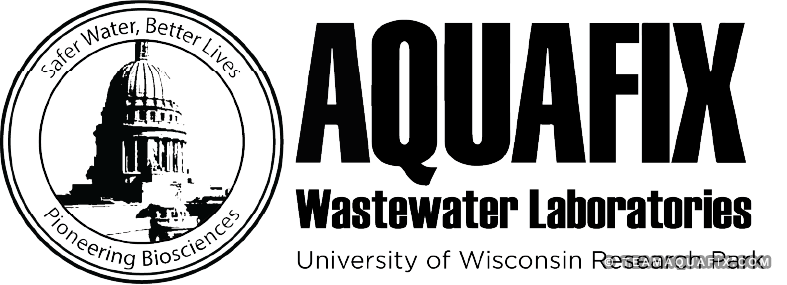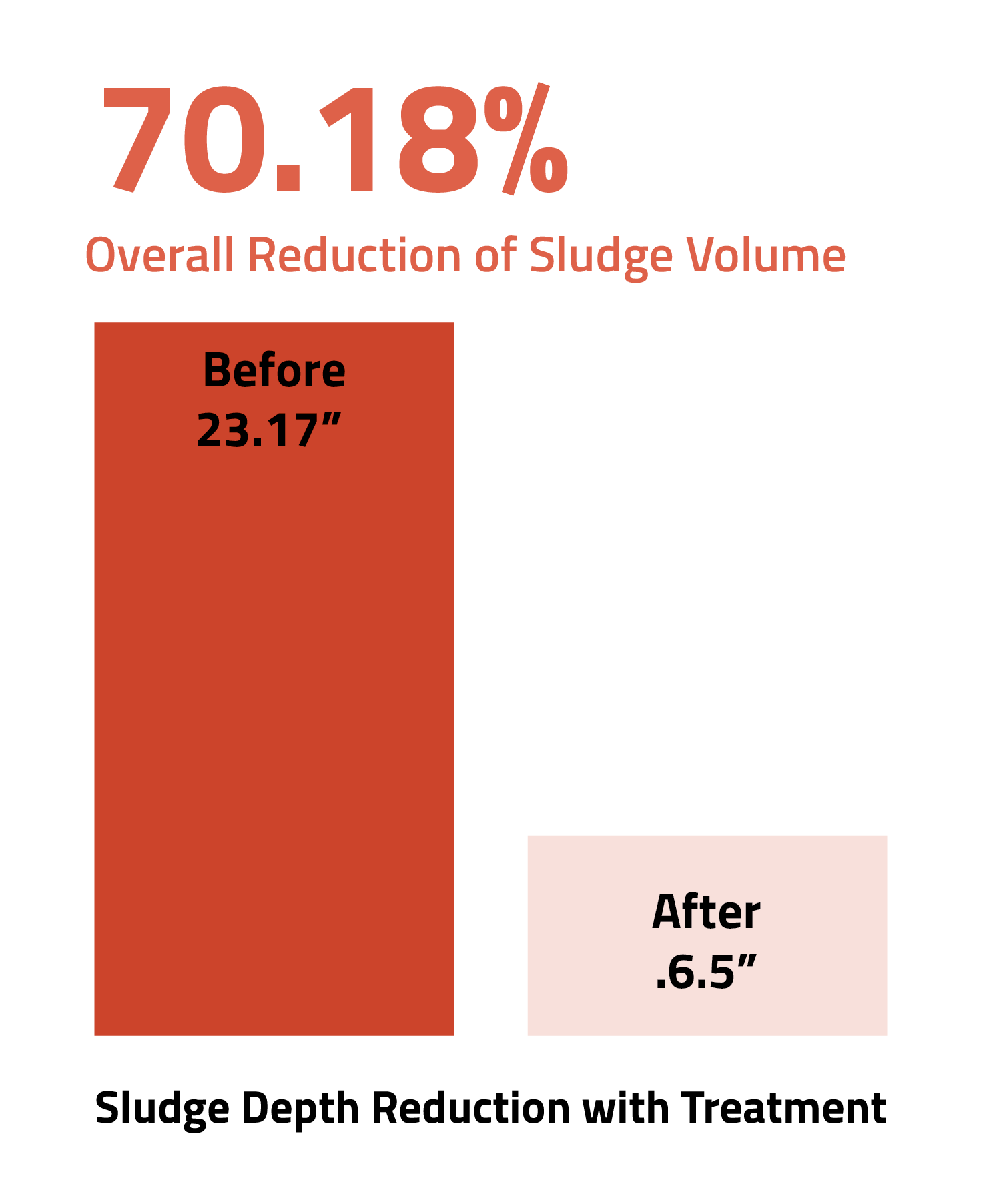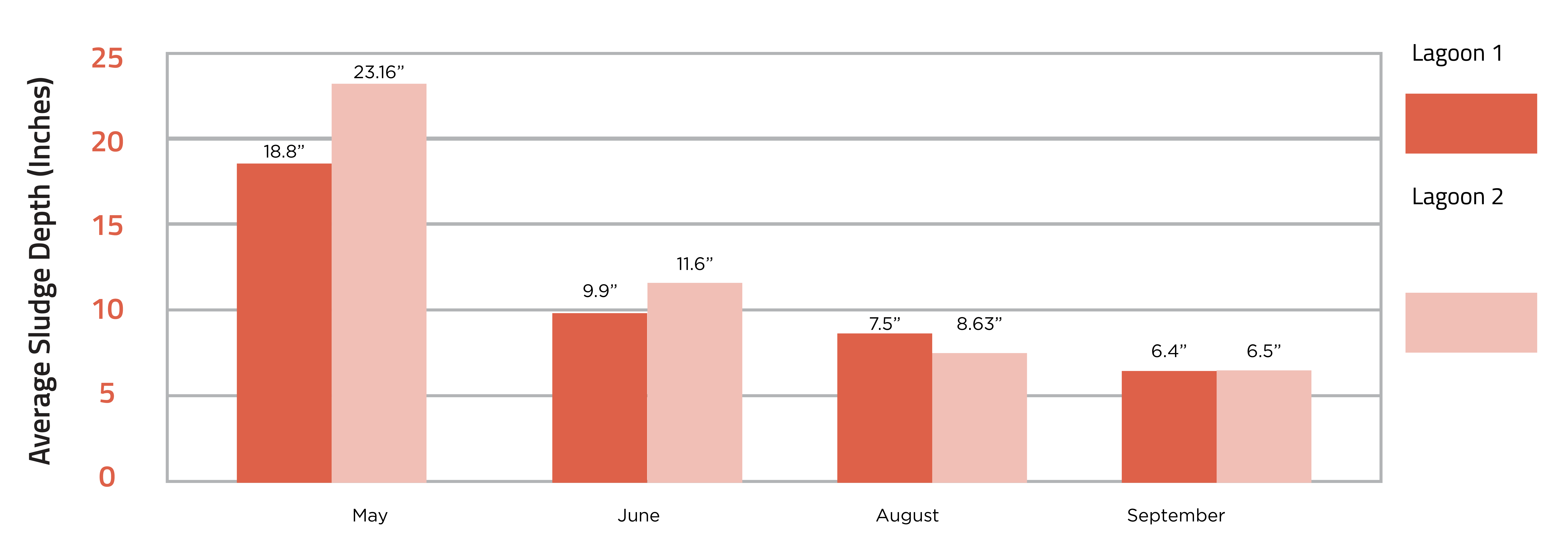
Cost-Effective Sludge Management with Sludge RX
Independant Data Collected and Submitted By
City of Pleasant Hope, MO
Summary
The Pleasant Hope wastewater treatment facility undertook a study to assess the effectiveness of Sludge RX and OxyPaks XL in reducing sludge volume within their two-cell lagoon system. The facility, dealing with sludge depths far exceeding its design capacity, faced operational and financial challenges. Traditional sludge removal methods, with bids exceeding $300,000, were unfeasible for the small community. Sludge RX presented an affordable alternative at $12,000.00, aiming to lower sludge levels to manageable depths.
The three-month treatment led to impressive reductions: a 71.93% decrease in the 4.81-acre primary lagoon and a 68.08% decrease in the 2.02-acre secondary lagoon. This result surpassed initial expectations, reducing sludge depths from up to 56 inches to averages of just over 6 inches. The cost savings achieved with Sludge RX, a 96.03% reduction compared to the lowest mechanical removal bid, underscored its economic viability for small wastewater treatment facilities.

Background
Effective sludge management is essential in wastewater treatment, especially for lagoon systems like Pleasant Hope’s. Excessive sludge can cause operational challenges, including reduced efficiency, higher costs, and potential regulatory non-compliance. Installed in 1988, the facility’s two-cell lagoon system was designed to handle 4.6 dry tons of sludge annually. However, sludge depths began to exceed this limit significantly.
The 4.81-acre primary lagoon and the 2.02-acre secondary lagoon faced unsustainable sludge depths, with some areas reaching 56 inches and averages of 23.16 and 20.05 inches, respectively. The high cost of conventional sludge removal methods posed a financial challenge, with bids far exceeding the community’s budget.
In response, the facility explored alternative solutions, leading to the selection of Sludge RX and OxyPaks XL. Sludge RX accelerates organic sludge breakdown, and OxyPaks XL enhances aerobic digestion. This approach offered a cost-effective and feasible alternative to expensive mechanical removal, aligning with the need for sustainable sludge management and compliance
Objective
The study at Pleasant Hope’s wastewater treatment facility aimed to assess the effectiveness of Sludge RX and OxyPaks XL in reducing sludge volumes in the 4.81-acre primary and 2.02-acre secondary lagoons. The focus was on whether the treatment could achieve significant sludge depth reductions and maintain optimal operational levels. Additionally, the study sought to evaluate the cost-effectiveness of Sludge RX compared to traditional, more expensive sludge removal methods, considering the facility’s budget limitations and commitment to sustainable waste management.
Fig 1. Average Lagoon Sludge Depth Reduction Over Time

Methods
The study at Pleasant Hope’s wastewater treatment facility focused on evaluating the effectiveness of Sludge RX and OxyPaks XL in sludge reduction. Baseline measurements were taken in May using a Sludge Judge to establish a comprehensive baseline across both the primary and secondary lagoon cells. This initial assessment helped set realistic reduction targets and understand the extent of sludge accumulation.
The treatment with Sludge RX and OxyPaks XL began in May and continued through June, paused in July, and resumed in August, with final assessments in September. This schedule allowed for a focused observation of the treatment’s effectiveness over four months.
Throughout the study, facility operator Joseph Thompson diligently monitored key parameters like pH, TSS, ammonia, phosphate, and BOD. Regular checks ensured the treatment effectively reduced sludge volumes without negatively impacting effluent quality or the overall health of the lagoon system.
Discussion and Conclusions
Data from the Sludge RX treatment at Pleasant Hope’s facility showed significant sludge volume decreases in both lagoons. Notable reductions occurred within three months, demonstrating Sludge RX’s rapid and effective action against excessive sludge.
Chief Operator Joseph Thompson highlighted the remarkable reduction in sludge depths—71.93% in the primary lagoon and 68.08% in the secondary lagoon. Depths decreased from averages of 23.16 inches and 20.05 inches to around 6 inches in both lagoons, exceeding expectations and offering a cost-effective alternative to expensive mechanical methods.
Integrating Sludge RX proved not only to be operationally efficient but also economically advantageous. The cost of implementing Sludge RX was a mere 3.97% of the lowest conventional sludge removal bid, translating to a 96.03% cost reduction in sludge management expenses. The financial viability of Sludge RX makes it a compelling choice for facilities aiming to reduce costs while maintaining high operational standards.
Future Directions
Pleasant Hope will continue its research on Sludge RX, focusing on the long-term effects and optimal application strategies. The facility plans to regularly monitor sludge levels to ensure sustained reduction and to fine-tune treatment protocols.
The facility also aims to assess Sludge RX’s impact on overall lagoon system health, including other wastewater treatment aspects and the influence of seasonal changes. These insights will be valuable for other small facilities seeking cost-effective sludge management methods. Pleasant Hope’s experience, showcasing the viability of affordable, sustainable solutions, could inspire broader application of Sludge RX in diverse wastewater treatment settings.


Very interesting, could sludge RX work in a small bio-reactor system to reduce our sludge removal costs. Our sludge is removed to a sludge storeage tank and then pumped out for removal from the site.